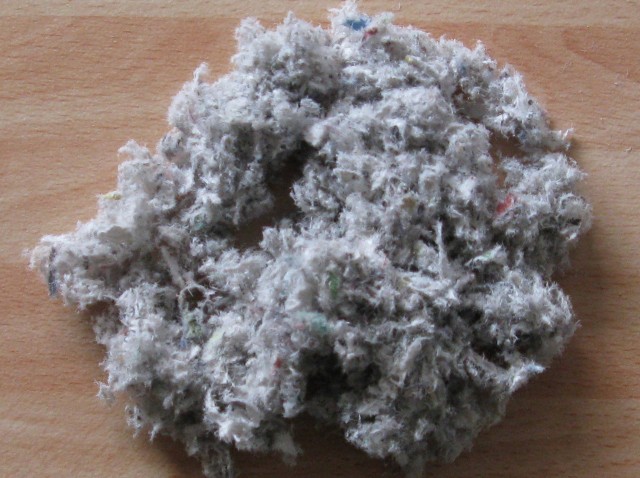I Spent $3,500 on Shredded Newspapers to Insulate My Home
by Bizzy Coy

In four out of five of my previous New York City apartments, the first hiss of the radiator meant the windows would stay wide open until winter passed. Otherwise, it was a Wet ’n’ Sweaty Party up in there.
Oh, how I miss those carefree, overheated days. I’m now perched in upstate New York in my very own house and paying my very own heating costs for the first time in my life. I freaked out the first time I had my heating oil tank filled for almost $900. I thought it would be, what, a hundred bucks? Two hundred? I had no frame of reference. Big surprise: Oil’s expensive.
Built in 1950 on a tiny lake, the house is a cottage construction, built as a second home for a middle class New York City family to escape to over the summer. With no insulation in the exterior walls, it wasn’t intended for full-time use. The fiberglass insulation in the attic’s low-ceiling is probably 20 to 30 years old, flattened and saturated with mouse shit, and well below modern standards.
My dad had been telling me to get the attic insulated ever since he first visited the house. He’s a home inspector, and I knew he knew what he was talking about, but I just didn’t want to commit to a project that big — until I filled the oil tank again for $878.51. Okay, I thought. Something has to give. Still feeling the financial pinch from the house purchase 10 months earlier, I had to make my first capital improvement: attic insulation. Exciting, huh? It wasn’t exactly a homeowner’s dream project.
I was quoted $3,500 by a local family-owned business to remove the shit-filled fiberglass insulation, air seal the attic, and insulate it with a 14-inch layer of blown-in cellulose, which is made of specially treated recycled newspapers. It would bring my attic’s insulation value from a paltry R-11 to an Energy Star recommended R-49. Fancy! (According to Energy Star: “The R-Value is a measure of insulation’s ability to resist heat traveling through it. The higher the R-Value the better the thermal performance of the insulation.”)
A crew of three gentlemen came to do the job. They worked steadily for 10 hours. There was a huge mess at first, but it all got cleaned up. The workers were friendly, professional, and overall awesome. The nagging voice that had been chanting things I’d rather buy for $3,500 (kayaks, hot tub, lifetime Netflix subscription?) finally ceased and I wrote them a check.
Was it worth the money? Based on some numbers from the U.S. Department of Energy, I could have expected to spend $6,347 a year on heating costs prior to my new insulation. Post-insulation, it’ll be more like $5,580 a year. With annual savings of around $767, I’ll recoup my $3,500 investment in less than five years, and will continue to save for years after that. Not too bad.
I was pumped to apply for the energy efficiency federal tax credit, too, but it turns out that expired on Dec. 31, 2013. Curses! I want my $350 refund! But I’ve been told it’s likely to get retroactively renewed (here’s hoping).
Beyond money, there’s a quality of life upgrade I can already feel. The thermostat still vacillates between 65 and 67 during the day like it did before, but I don’t feel the need to concoct a five-layer outfit and cocoon myself in a quilt — all thanks to my 14-inch blanket of newspapery goodness.
Bizzy Coy is a writer in the wilderness of upstate New York. Photo: Wikimedia Commons
Support The Billfold
The Billfold continues to exist thanks to support from our readers. Help us continue to do our work by making a monthly pledge on Patreon or a one-time-only contribution through PayPal.
Comments